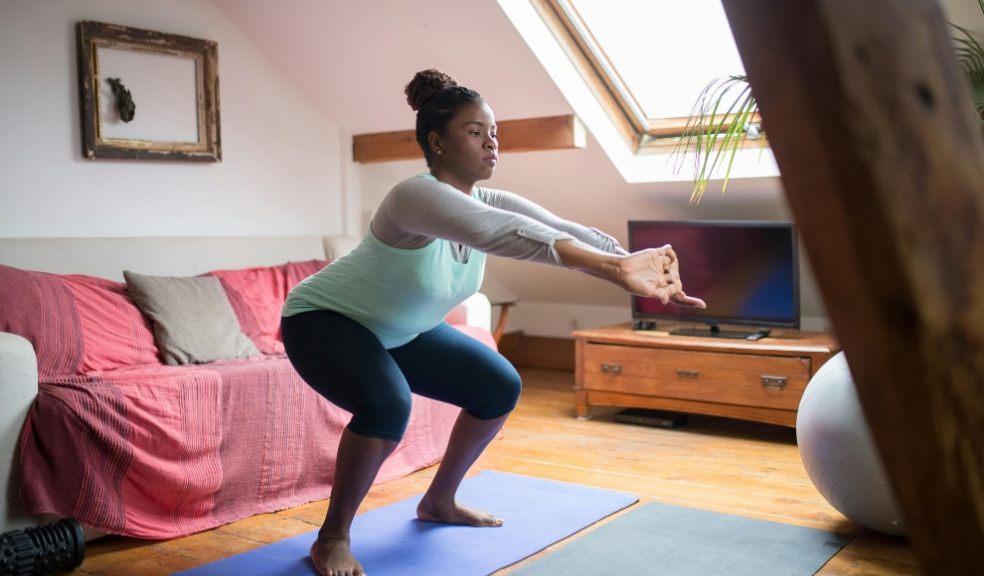
Top tips for Marathon training
With the London Marathon fast approaching, participants will likely be ramping up their training to prepare.
Keoghan Bellew, PT at Fitness Superstore, has shared his expert tips around supplementing an exercise regime with other workouts, to help elevate running performance, build strength, and enhance endurance.
From targeted strength training for your legs and core to endurance-boosting workouts and yoga poses, please Keoghan has advice on creating a well-rounded fitness strategy to support running goals,
Essential workouts to improve your running technique:
Strength training for legs
Strength training not only builds muscle to give you more power while running, but it can also help correct muscle imbalances which are common among runners. Try adding 10 reps each of these exercises to your training regime.
Squats
Targeting the quadriceps, hamstrings, and glutes, squats build lower body strength. Start with your feet shoulder-width apart, then lower your hips back and down as if sitting into a chair. Lower until your thighs are parallel to the ground. Ensure proper form by keeping your back straight and knees aligned with your toes. Push through your heels to return to the starting position. You can add dumbbells or a kettlebell to your workout to add some extra weight.
Lunges
Lunges work on individual legs, improving balance and strength in the quads, hamstrings, and glutes. Stand with feet hip-width apart and take a step forward with one leg, lowering your body until both knees are bent at a 90-degree angle. Push off the front foot to return to the starting position then repeat on the other leg. You can also perform walking lunges by moving from one leg to the other, instead of returning to your starting position. Again, feel free to add dumbbells or a kettlebell to your lunges for an added challenge.
Deadlifts
Barbell deadlifts strengthen the posterior chain, including the hamstrings, glutes, and lower back. It’s important that you use proper form to protect your back and engage the correct muscle groups.
To perform a deadlift properly, position the barbell on the ground, centred over the middle of your feet. Your feet should be hip-width apart. Hinge at your hips and knees and grip the barbell, keeping your back straight the entire time. Engage your core and press through your heels, straightening your hips and knees simultaneously. Keep the barbell close to your body throughout the lift and ensure your shoulders are fully pulled back. Engage your lats (muscles in your upper back) by imagining squeezing oranges in your armpits.
To lower the barbell, push your hips back first, then bend your knees. Lower the barbell in a controlled manner to the ground.
Core strength exercises
Love them or hate them, planks are great for building strength in your core, making them a fantastic addition to your running regime. A strong core helps to stabilise the body while running, improving your form and reducing your risk of developing an injury.
You can also try some variations on the classic plank, such as mountain climbers. From your plank position, bend one knee towards your chest and quickly switch legs in a running motion. To get the most out of this workout, keep your core engaged and maintain a steady pace.
Another option is the side plank. To perform this, lie on your side with your elbow directly beneath your shoulder and your legs stacked. Lift your hips to create a straight line from head to heels. Hold the position, engaging your obliques.
Exercises for stamina
Building your stamina will allow you to run further and for longer, making it a vital part of your training routine, whether you’re a casual runner or training for an event. Any form of cardio can help build your stamina, so feel free to mix your exercise routine up. You could try everything from cycling, rowing, swimming, and even boxing to help work your cardiovascular system. Whatever exercise you do, remember to be consistent and up the intensity gradually for the best results.
Yoga poses for runners
Incorporating yoga or dynamic stretching into your routine improves flexibility and balance and reduces the risk of injuries. Yoga is also a great way to cool down after a run, or a calming option if you still want to keep your body moving on rest days. If you’re looking for some yoga poses to improve your running form, choose those that focus on the legs, hips, and core. Some poses that are particularly useful for runners are:
Low lunge
The low lunge is great for stretching key muscle groups in your hips, quadriceps, and ankles. Begin in a standing position with feet together and step one foot back, extending the leg straight and lowering the knee to the ground. The front knee should be directly above the ankle, forming a 90-degree angle. Engage your core, lift your chest, and reach your arms overhead, or keep them on the front knee for stability. Hold the stretch, feeling the opening in the hip flexors and quadriceps. Repeat on the other side.
Downward facing dog
The downward facing dog is one of the most beneficial yoga poses around, helping to stretch the entire body, especially the hamstrings, calves, and shoulders. Start on your hands and knees in a tabletop position. Tuck your toes, lift your hips toward the ceiling, and straighten your legs. Your body should form an inverted V-shape with your hands shoulder-width apart and feet hip-width apart. Press your palms into the mat, engage your core, and extend your spine. Keep your heels reaching toward the ground, though they don't need to touch, and relax your head between your arms. You can also pedal your feet to stretch the calves and hamstrings even more.
Pigeon pose
Pigeon pose is the perfect yoga position for stretching the hip flexors, glutes, and outer thighs, helping to improve mobility and flexibility in your hips. Begin this pose in a tabletop position and bring one knee forward towards the outer wrist, placing your shin on the mat at an angle. Extend your back leg straight back with your toes pointed away from your body. Ensure your hips are square to the front of the mat. Hold the stretch then repeat on the other side. For a deeper stretch, slide your back leg further away. You can also lower your chest towards your front shin.
Keoghan said: “Focusing on a singular exercise routine such as running can inadvertently lead to muscular imbalances and an increased risk of overuse injuries. Diversifying your training regime can help to target those muscular imbalances and improve your overall running form.
“By integrating a mix of strength training, cardiovascular exercises, and flexibility work, you’re equipping your body with the tools it needs to run further for longer.
"Plus, mixing things up keeps your workouts interesting so you never feel like you’re in a workout rut. Versatile pieces of equipment like a set of dumbbells or a yoga mat take up no space in your home and there’s no limit to the kinds of exercises you can do with them, making them great investments for runners looking to upgrade their training regime.”













